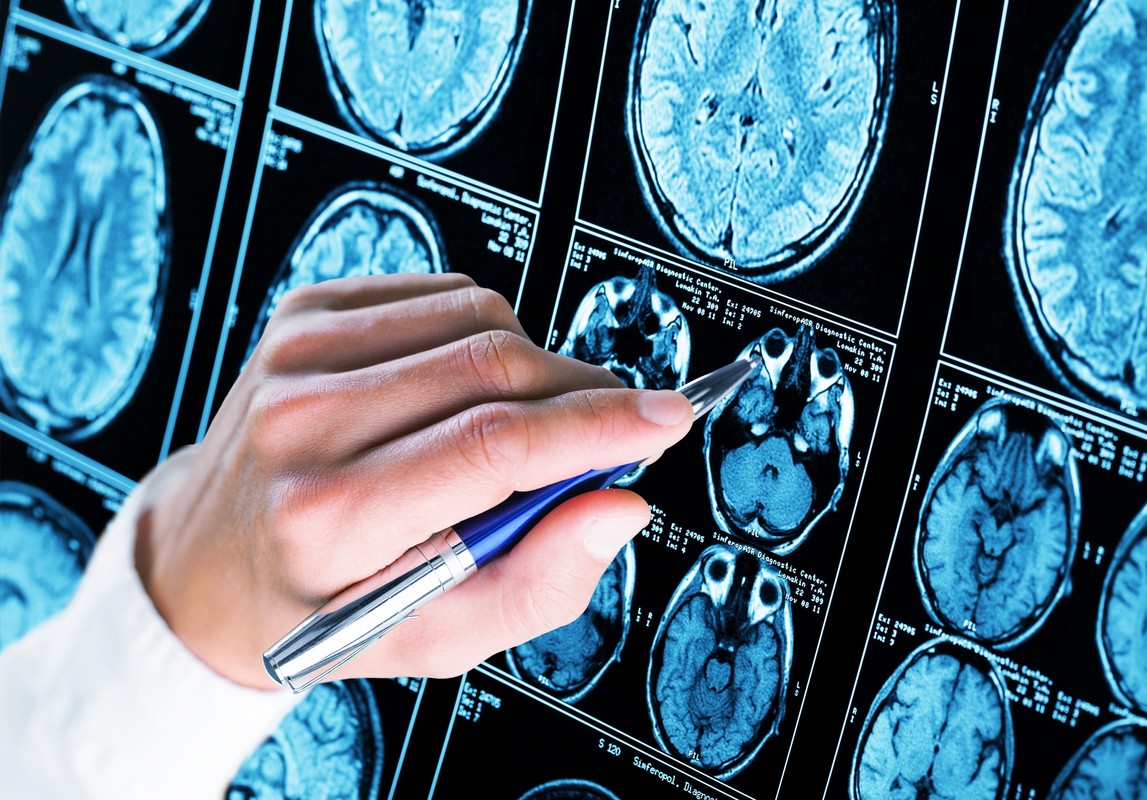
Alzheimer's and Dementia: Which Areas of the Brain Are Affected?
The human brain is made of billions of specialized cells designed to process and transmit information. When these cells lose their ability to function properly, vital communication between neurons is impaired or completely interrupted.
Dementia and Alzheimer’s disease disrupt neurons and cause damage to many areas of the brain, leading to a wide array of progressive symptoms. If you suspect dementia or Alzheimer’s in a loved one, it is important to find a neurologist to diagnose the cause of these cognitive and behavioral changes.
Before identifying the specific brain changes and the areas of the brain which are affected by Alzheimer's, it’s important to define neurology terms to better understand this disease.
What Is the Difference Between Dementia and Alzheimer’s Disease?
Dementia is not a specific disease, but an umbrella term that describes an array of cognitive symptoms which impair an individual’s ability to perform everyday tasks and live independently. Alzheimer’s disease is one type of dementia.
Some of the signs of dementia include1:
- Reduced ability to focus
- Problems with memory
- Changes in language and communication
- Impaired judgment and reasoning
Types of Dementia
Some other types of dementia with unique causes and diagnostic markers are1:
- Frontotemporal dementia
- Lewy body dementia
- Dementia related to Parkinson’s disease
- Creutzfeldt-Jakob disease
- Huntington’s disease
- Vascular dementia
- Mixed dementia
What Neurological Problems Are Involved in Dementia?
For neurons to function well, be replaced with healthy cells, and avoid premature cell death, key biological processes must occur. People with Alzheimer’s disease experience changes that impair critical functions:
- Communication between nerve cells. Neurons exchange information through a chemical-electric charge that crosses a microscopic gap called a synapse. A single healthy neuron may have as many as 7,000 synaptic connections to other nerve cells2.
- Regeneration and repair. Neurons have the ability to be repaired and to adjust or change their synaptic connections based on the chemical and electrical messages they receive. A healthy brain can even generate new nerve cells by the process of neurogenesis. This ability to repair or change connections and generate new cells is vital to memory and learning2.
- Nutrient delivery and metabolism. Nerve cells need a steady supply of chemicals and nutrients to perform their functions and survive. Oxygen and glucose are critical to cell survival, and good circulation delivers these key nutrients while carrying away the waste products of energy metabolism2.
How Does Alzheimer’s Disease Affect the Brain?
During normal, healthy aging, the brain does shrink somewhat, but it does not lose large numbers of neurons. In the early stages of Alzheimer's, however, many neurons lose their synaptic connections, stop functioning, and die without being replaced.2
Losing a large number of neurons causes noticeable symptoms, prompting a primary doctor or caregiver to suspect Alzheimer’s or another type of dementia. The changes that occur may be related to one or more of these disease processes2:
- Vascular issues
- Neurofibrillary tangles
- Amyloid plaques
- Chronic inflammation
- TREM2 gene

What Areas of the Brain Are Impacted by Alzheimer’s and Dementia?
A comprehensive neurologist appointment will help determine the factors contributing to cell death and identify which areas of the brain are being affected by neuron loss and tissue damage. Specific functional symptoms will also help determine which specific lobes of the brain are involved.
Frontal Lobe Involvement
The frontal lobe of the brain is important for planning, organization, and regulating inappropriate behavior. When Alzheimer’s disease or dementia attacks the frontal lobes, the patient may be unable to control these symptoms2:
- Loss of motivation or lack of interest in activities
- Fatigue, lethargy, and sleepiness
- Repetitive behavior without purpose, such as folding something more than once, or taking shoes off and on for no reason
- Bizarre or inappropriate behavior, including aggression, swearing, removing clothing, eating inedible items, uninhibited sexual behavior, or urinating in public
Temporal Lobe Involvement
The temporal lobes are essential to memory, especially episodic memory. In order to intake new knowledge and remember where we set down the car keys, we must encode new information and retrieve it later. Alzheimer’s disease commonly damages the temporal lobes, making it difficult to store and recall a recent “episode.”
In the early stages of memory loss, visual cues like photographs or verbal reminders may help in the retrieval of stored events. Alzheimer’s patients often retain semantic memory, which allows them to remember how to talk and perform a task like baking a cake, but, without episodic memory, it is impossible to recall the people and events surrounding a celebration.
Parietal Lobe Involvement
The parietal lobes help interpret sensory input, which is essential to reading and recognizing faces. When the parietal lobes are damaged throughout the course of the disease, patients may lose the ability to3:
- Perform simple mathematical calculations
- Read and understand instructions
- Tell left from right
- Write legibly or coherently
- Draw, sketch, or paint
- Recognize faces, places, or objects (visual agnosia)
- Locate and pick up items (constructional apraxia)
Occipital Lobe Involvement
The occipital lobes process visual information and make sense of what we see. This area of the brain is rarely damaged by Alzheimer’s disease, but, if it is involved, the patient may experience hallucinations or the inability to recognize familiar household objects and use them appropriately.
Alzheimer's Stages and Progression
In the early stages of Alzheimer’s disease and dementia, neurons and their connections are destroyed in the areas of the brain which support memory. In later stages, brain functions involving language, reasoning, and regulating behavior become affected. In most cases, the patient will eventually lose their ability to safely live independently.
In the late stages of Alzheimer’s, as more neurons are lost, many areas of the brain shrink in size. This process is referred to as widespread brain atrophy, resulting in a significant loss of nerve tissue and severely impaired brain function2.
The Stages of Dementia
The stages of dementia help determine when to find a neurologist and plan for supportive care. These guidelines from the Alzheimer’s Association will help you know what to expect as a patient or caregiver.
- Stage One Dementia: Pre-Illness. At this stage, symptoms are not noticeable and memory problems have not developed. A medical professional is unable to diagnose a disease at this stage.
- Stage Two Dementia: Very Mild Cognitive Decline. Everyone's memory functions change with age, and a mild cognitive decline might involve very normal problems, like forgetting where keys or wallets were left. Dementia is difficult to diagnose at this stage.
- Stage Three Dementia: Mild Cognitive Decline. At this stage, memory loss is mild but becomes chronic and may be noticed by family members or friends. Work performance may decline and important information may be forgotten.
- Stage Four Dementia: Moderate Cognitive Decline. A primary care doctor often diagnoses dementia at this stage, as it has become clearly noticeable to the patient or their loved ones. Personality changes are visible, and consulting with a neurologist will help determine the root cause, treatment options, and prognosis.
- Stage Five Dementia: Moderately Severe Cognitive Decline. When dementia symptoms reach this stage, confusion is impacting everyday self-care and there is significant short-term memory loss. New episodic memories are not being formed, leading patients to forget meeting new people, receiving instructions, or hearing a story.
- Stage Six Dementia: Severe Dementia. At this stage, family members and caregivers may have the most difficulty in coping with the symptoms of the disease. Assisted living may offer a safe and supportive alternative to prevent wandering off or self-injury.
- Stage Seven Dementia: Very Severe Dementia. When the disease reaches this level of brain atrophy, all communication may be lost. The patient may be unable to express themselves and will need constant supervision as well as trained nursing staff or caregivers to provide palliative care.

Slowing the Progression of Alzheimer’s Disease and Dementia
While the progression of Alzheimer’s disease and many kinds of dementia cannot be reversed, there are treatments available to slow the progression and protect neural tissues, allowing patients to maintain independence and a higher quality of life for as long as possible.
If you are looking for a local neurologist in New York, look no further than Crystal Run Healthcare. Our providers span a wide array of neurology subspecialties to bring the most comprehensive and innovative treatment plans available for Alzheimer’s and dementia. Call today or visit us online at Crystalrunhealthcare.com to schedule a consultation and begin treatment as soon as possible.
Sources:

 Optum Radiology at Crystal Run Healthcare
Optum Radiology at Crystal Run Healthcare Request medical records online
Request medical records online